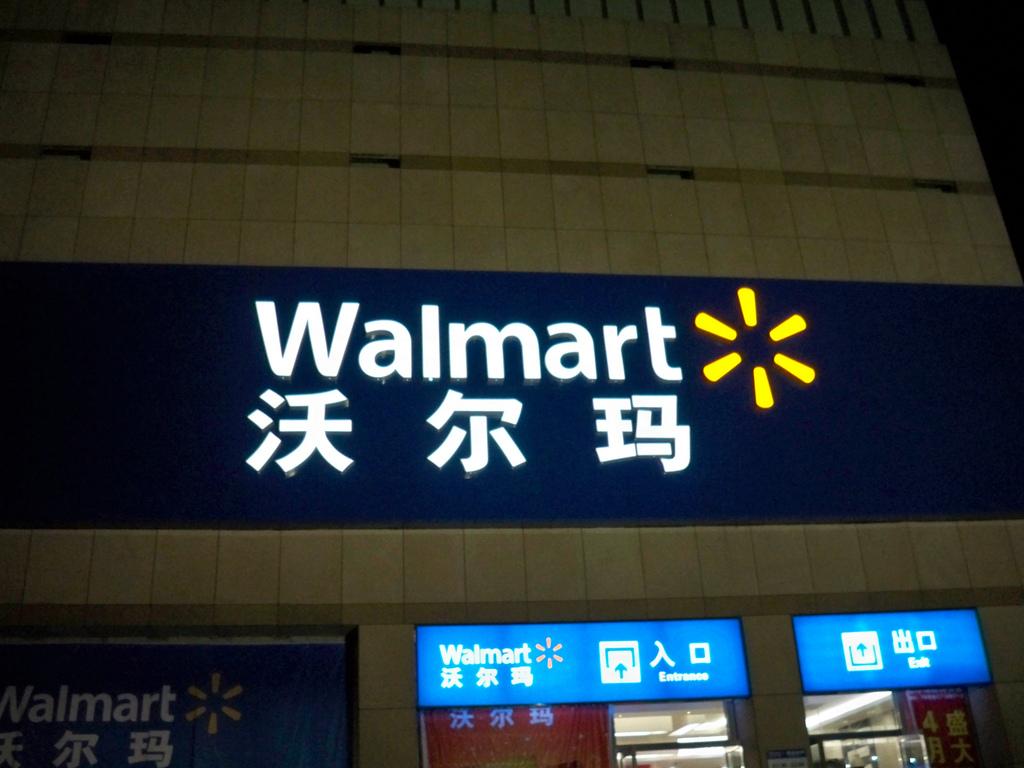In red China, Walmart leading a green revolution
In China, Walmart stands as a symbol of safety and environmental respect, an outgrowth of their effort to green their supply chain. (Photo by Flickr user Bill Lehane, cc-by-sa.)
In China, the company leading a green revolution is one that has usually been opposite environmentalists in the United States.
Walmart. The discount retailer and largest company in the world is pushing its suppliers and vendors to become more socially and environmentally sustainable.
Walmart and China are conducting a “bold experiment in consumer behavior and environmental stewardship that will be critical to the fate of the planet’s environment,” wrote Orville Schell, director of the Center on U.S.-China relations at the Asia Society in New York, in The Atlantic.
On the flip side, critics say this is just an elaborate PR stunt by both China and Walmart.
Schell said Walmart and China have many similarities which make this relationship logical. Both have leader-centric cultures and almost dogmatic ideologies driving them forward. Both emphasize service, be it to customers or society.
“They’re not particularly democratic, though they may be populist,” Schell said.
Both China and Walmart had vast image problems in the 90s and early 2000s. At Walmart, Lee Scott took the helm in the 2000s and brought in an environmental consultant to help.
“He just got sick and tired of being the punching bag of the universe,” Schell said. The consultant “had the idea that it was possible to not only change the image of the company, but also the substance of it as well, in an environmental sense, by greening its supply chain. And he, moreover, had this idea you could make money doing it.”
Reduced packaging, increased focus on energy consumption, reformulated shipping routes all ensued and contributed to the bottom line.
“Ultimately, they ended up in China, because some 70 percent of what Walmart sells is made in China,” Schell said.
Scott announced the change to employees and suppliers and people were stunned. If Chinese suppliers didn’t green up, Walmart would no longer do business with them.
Schell said that as things turned in China, things would change at Walmart. And with changes at Walmart, there would be changes at companies across the United States. It’s the Walmart Effect, Schell said, the green version.
The change couldn’t really come at a better time for China. The country, having become the world’s industrial park, had experienced intense pollution from manufacturing as well as to produce the energy needed to produce the world’s products.
“Walmart could help China by managing its suppliers, helping them green their supply chain, showing them how to do it and how they could make money do it,” Schell said. “That would help China’s environment, which was something the government very much wanted because the Chinese were getting angry. Chinese were so worried about what they were feeding their children and eating themselves.”
And for Walmart, they hoped to develop an edge over local competitors because they wanted their brand to stand for quality and food safety.
“It’s the brand names in China that people trust because they know they have the most to lose if they get caught cheating,” Schell said.
Schell said, in Walmart’s case, the green effort is real, because it’s good business for them. But what’s difficult is bringing in line the thousands of companies that work for Walmart and got there by lowering their costs a penny at a time — in many cases by cutting corners.
“Who knows what they’re selling. Is it safe? This is the real problem for Walmart. How do you deal with that cost-cutting culture when you’re asking people to make products that are safer,” Schell said.
